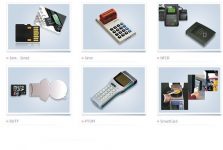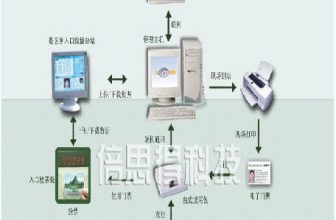
Application analysis of NFC in the financial field
[ad_1]
1 background
NFC (NearFieldCommunicaTIon), that is, near field communication technology. It is in line with RFID (RadioFrequencyIdenTIficaTIon) and is a technology that uses radio waves with a frequency of 13.56MHZ for short-distance communication within 10cm. The communication speed is 106kbps, 212kbps, and 424kbps. You can choose from them. It can be used for wireless communication with a maximum speed of 212kbps within 10cm between various electronic devices such as mobile phones, digital cameras, PDAs, personal computers, and game consoles. .
With the in-depth promotion of RFID and the continuous development of NFC technology, NFC is becoming popular in the field of micropayments and is emerging in other financial applications.

2 Application of NFC in the financial sector
2.1 Application of NFC in micropayment
In the past ten years, the development of foreign NFC technology has been quite rapid, especially in the exploration of micro-payment applications, such as electronic wallets, electronic money in bus tickets, entertainment and sports tickets, and smart cards and mobile phones as carriers. Wide range of applications.
In foreign countries, operators and equipment manufacturers in France, Germany, the United States and other places have also conducted relevant tests on mobile payment services and have achieved success. In 2006, Philips, Nokia and other companies announced in Germany that after a ten-month field trial, NFC technology began to be commercialized. At the same time, the non-profit industry association, the NFC Forum, was also formally established to promote the development and popularization of NFC, promote the implementation and standardization of NFC technology, and ensure coordination and cooperation between equipment and services.
In our country, the development of the application of NFC technology in the past two to three years has also been particularly remarkable. After Guangzhou, Shanghai, Beijing, Shenyang, Zibo and other cities have also promoted the use of the municipal transportation card. This application is closely integrated with the municipal government’s subsidy policy, which has successfully simplified the bus procedures and reduced the cost of the bus system, and has been welcomed by the general public.
Regardless of China and foreign countries, RFID has begun to be used in the most practical, simple and mature NFC micropayment. However, the implementation of credit cards and bank cards is obviously more complicated. The reason is that the amount involved is large, and how to coordinate the interests of financial institutions and other enterprises, as well as financial supervision and transaction risks. Despite this, some developed countries are actively promoting financial services. There are also some explorations of financial applications in our country. However, compared with those countries, financial business is almost completely operated within the scope of government jurisdiction. The country emphasizes unified management. Although there are many advanced foreign technologies that can be introduced and implemented, it is difficult to implement. At present, some financial and communication companies are working on standards and pilot projects, but the pace of financial application implementation is much slower than that of advanced foreign countries. I don’t know when these work related to interest groups will come to an end.
In addition to the above-mentioned systemic issue of complete public ownership of finance, there is also the issue of understanding information security. For example, the design, production and issuance of the second-generation resident ID card resulted in excessive emphasis on information security. It was relatively closed, and its functions and secondary development could not be carried out. At present, it is only suitable for typical applications such as airports and cannot be popularized. Originally a resident information card controlled by the government, it should be widely used in various social insurance such as medical care, annuity, and public services, but these most basic applications have to be left to the third-generation resident ID card to solve. These applications are almost all related to finance and also belong to the financial field. However, the second-generation card only has personally identifiable information, and this scope is very narrow. Before the introduction of the second-generation ID card, many foreign companies have suggested that ID cards can be implemented and should be used for multiple functions. However, the Ministry of Public Security has rejected these suggestions and rejected foreign technology for reasons such as “national security”. The current medical insurance reform will turn the past blue “medical guarantee” into an RFID card. This is a major reform, but it cannot be combined with the second-generation card based on the same principles of RFID technology. It has to be regarded as a pity. In addition, retirement certificates, annuity certificates, disability certificates, academic degree certificates, etc., all documents related to public utilities and finance cannot be combined with the resident ID card. This is not only a problem of financial waste and inconvenience, but also for criminals. Opportunity. At present, the repeated prohibition of criminal individuals and gangs selling fake certificates and official seals is caused by the status quo that the certificates cannot use uniform high-tech certificates. One card with multiple functions has become a trend in the development of current ID cards, which will have to be considered in the future development of smart ID cards in my country.
2.2 Promotion of NFC mobile phones
At present, many application tests have proved that the application of NFC technology has a positive effect in increasing the transparency of the supply chain, saving time and labor costs, and improving work efficiency. The hot spots are mainly concentrated in the fields of logistics and warehousing, automatic highway toll collection, urban intelligent transportation, and manufacturing. The next hot spot for NFC applications will be mobile phones and automotive electronics.
Embedding the non-smart card into the mobile phone not only uses the portability and processing function of the mobile phone, but also uses the information exchange function of the contactless smart card. This technology can easily realize multiple functions such as electronic payment and data download. The combination of the mobile phone and the contactless smart card It is the general trend. Compared with the traditional smart card technical specifications, the biggest difference between NFC technology is that it can support active mode and passive mode, that is, you can turn your mobile phone into a card reader. This has opened up a lot of development space for the application of mobile value-added services.
[ad_2]




